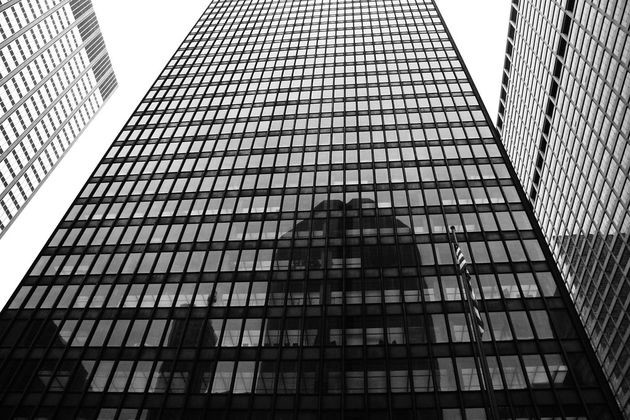 The Villa Savoye by Le Corbusier is one of the most recognisable example of a modernist house
The Villa Savoye by Le Corbusier is one of the most recognisable example of a modernist house
In the first half of the twentieth century, changes in technology and society led to the birth of a vision of an urban utopia that could be achieved through modernist design.
Although its origins can be traced to the late nineteenth century, modernism began in earnest in the early 1920s. In Germany the term modernism was synonymous with the Bauhaus, perhaps the most famous design school to have ever existed. Signifcant figures in the Bauhaus, including founder Walter Gropious and its final director Mies van der Rohe, became major modernist architects.
Although many modernist buildingsd date from the interwar period, the movement gained global popularity after the Second World War. The industrial demands of the war had left shortages of building materials like steel. Architects began to move away from traditional styles and embrace plate glass, cast iron and reinforced concretes to enable taller buildings with lighter structures.
 Seagram Building by Mies van der Rohe in New York
Seagram Building by Mies van der Rohe in New York
Many buildings needed reconstruction after the war. Modernism aimed to address the failures of traditional architecture when it came to solving the basic social needs of populations. It became the dominant style after World War II for institutional and corporate buildings, such as educational facilities and urban housing.
During the twentieth century it was also more possible than ever for a movement and its theories to spread quickly: architects were able to travel easily, collaborate internationally and discuss ideas and philosophy at a global scale.
 The Barcelona Pavilion by Mies van der Rohe
The Barcelona Pavilion by Mies van der Rohe
Modernist architecture has two chief guiding principles: form follows function and truth to materials. Functionalism, a term coined by American architect Louis Sullivan, stated that the building’s purpose was paramount to the design, and took precedence over beauty. Truth to materials was a principle that indicated that materials that best served the building should be used where needed and not disguised: timber was left unpolished, concrete exposed and unpainted.
There are several other recognisable characteristics to modernist design. Modernist buildings rejected elaborate trimmings and decorative holdings, leaning towards buildings that were clean and simple. Modern materials, such as exposed concrete, steel columns and raw timber were used with an emphasis on the natural expression of the material.
Houses were shaped in cubic and cylindrical shapes, with an emphasis on horizontal and vertical lines. Definite planes and solid boxes created a multitude of 90 degree angles. Roofs were predominantly flat and large windows in horizontal lines were often incorporated in the design.
 New York’s Guggenheim Museum by Frank Lloyd Wright
New York’s Guggenheim Museum by Frank Lloyd Wright
Interior spaces were often designed using open floor plans so that living spaces and kitchens flowed into one another, and huge amounts of glass ensured that the outdoors were highly visible for the inside of the houses. This also allowed large amounts of natural light inside, while the comfort of the occupants and internal temperature was enhanced with the use of sun and shade.
Amongst the most famous modernist buildings are the Guggenheim Museum in New York and Fallingwater House by Frank Lloyd Wright, Le Corbusier’s Villa Savoye and Mies van der Rohe’s Barcelona Pavilion. These buildings exemplify modernisms theories with their geometric, simple forms.
 Fallingwater House by American architect Frank Lloyd Wright
Fallingwater House by American architect Frank Lloyd Wright
In the 1970s, modernist architecture was declared dead and many modernist buildings were demolished. Its supposedly timeless icons were seen as outdated. Dead or alive, the legacy of modernism is evident in the buildings of today and the furniture that fills them. Open-plan living, built in kitchens and the origins of loft living are all part of today’s inheritance from the modernist godfathers.


















